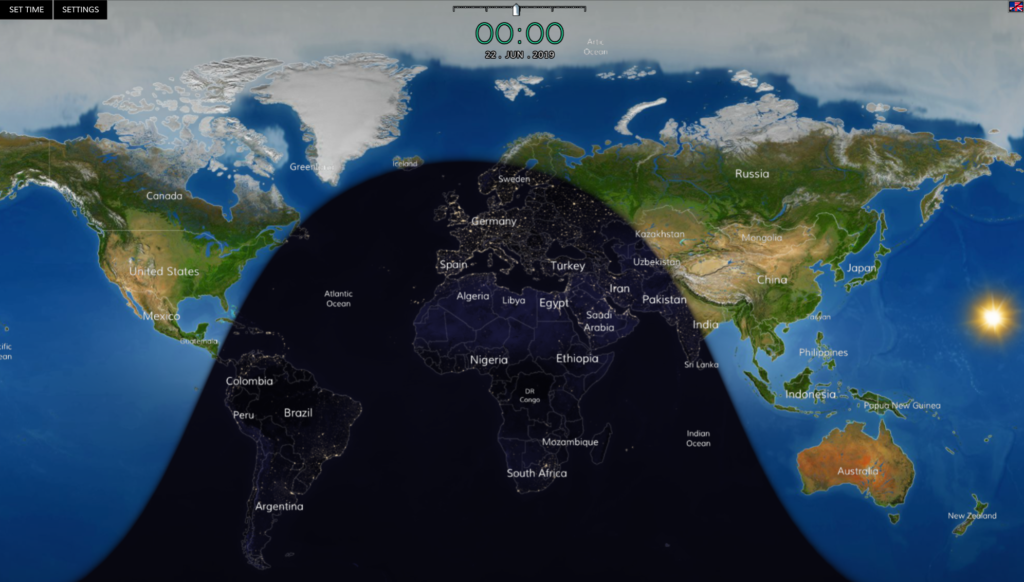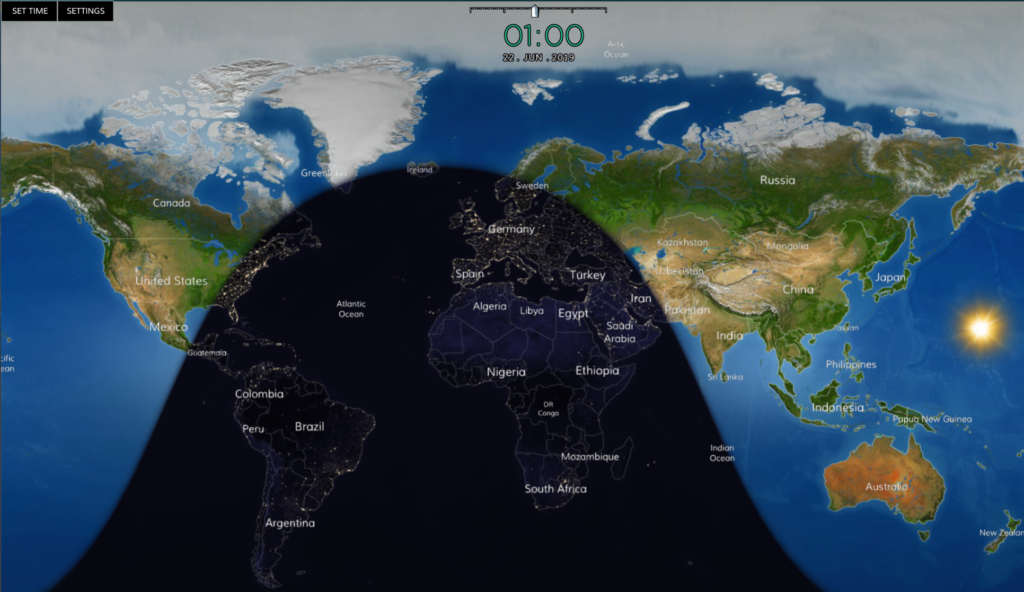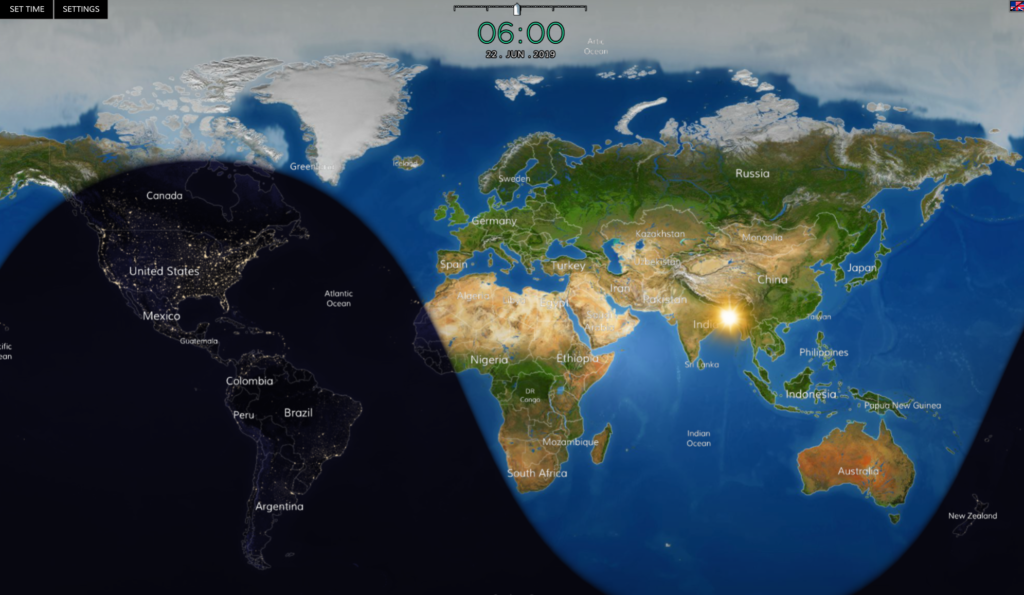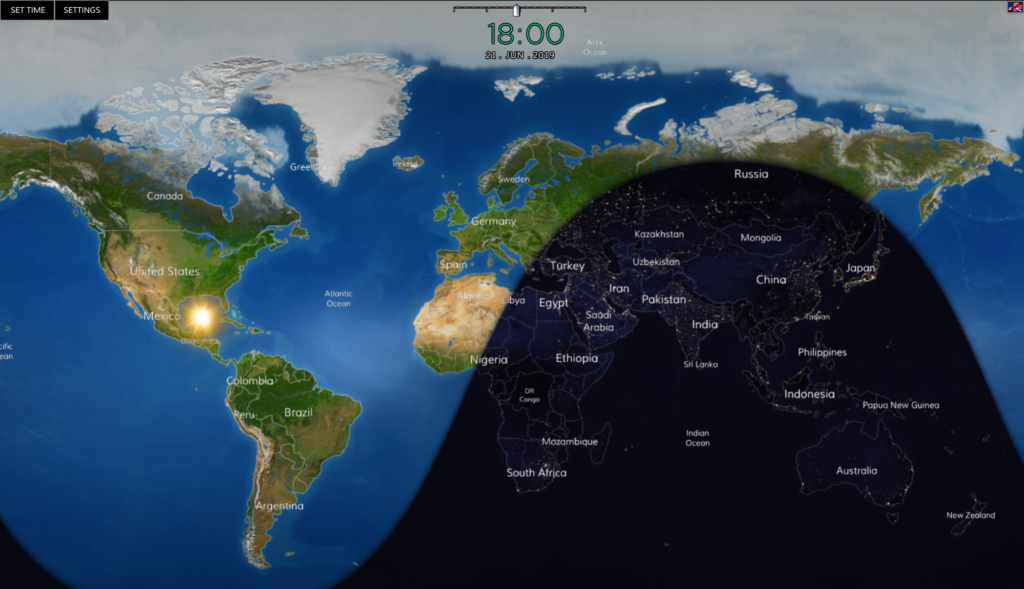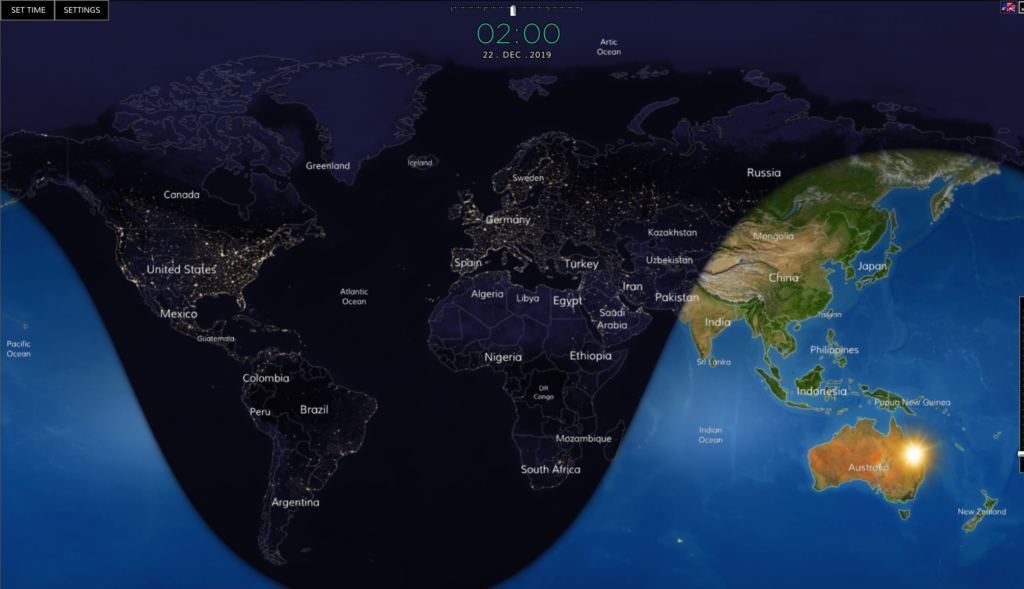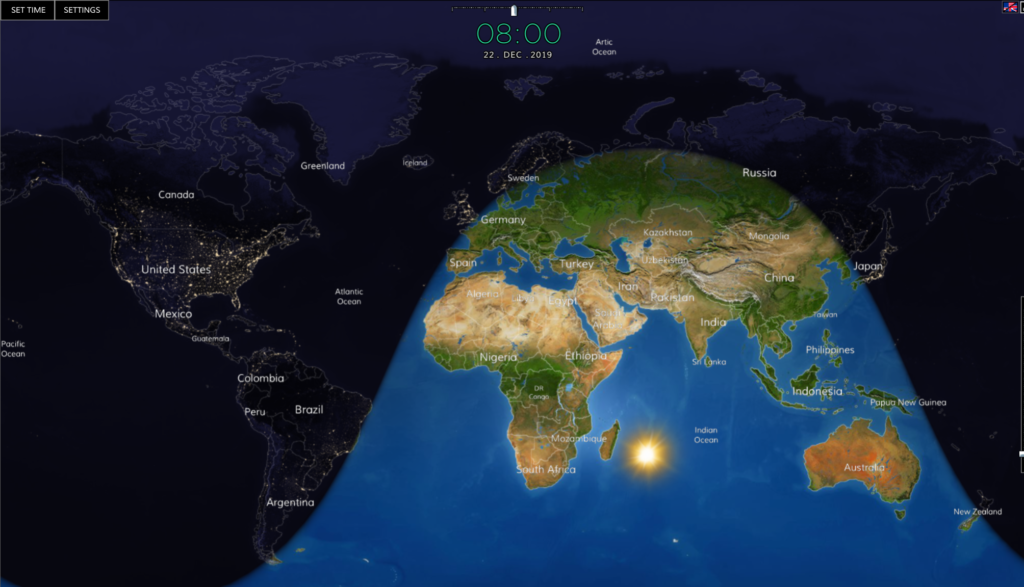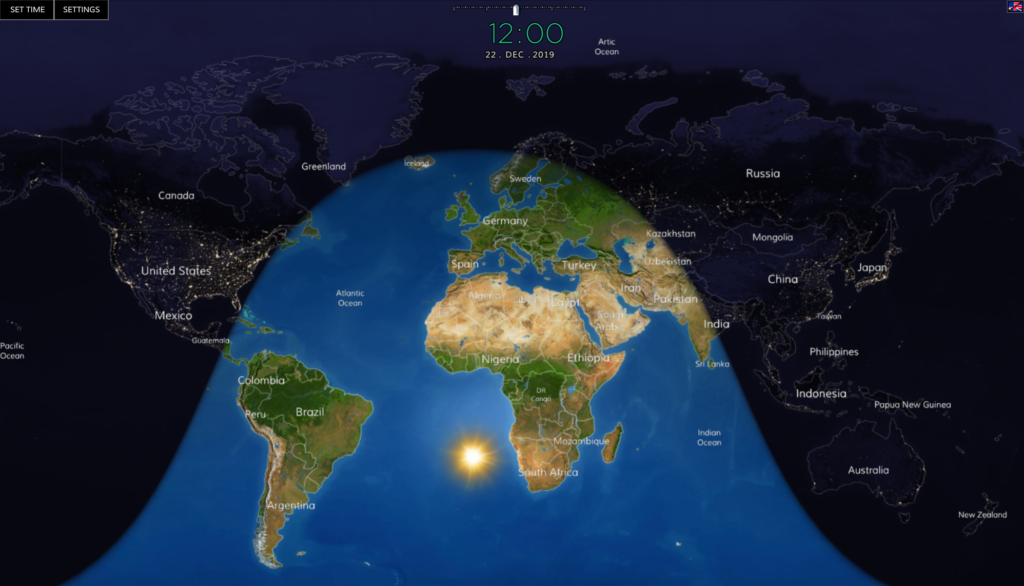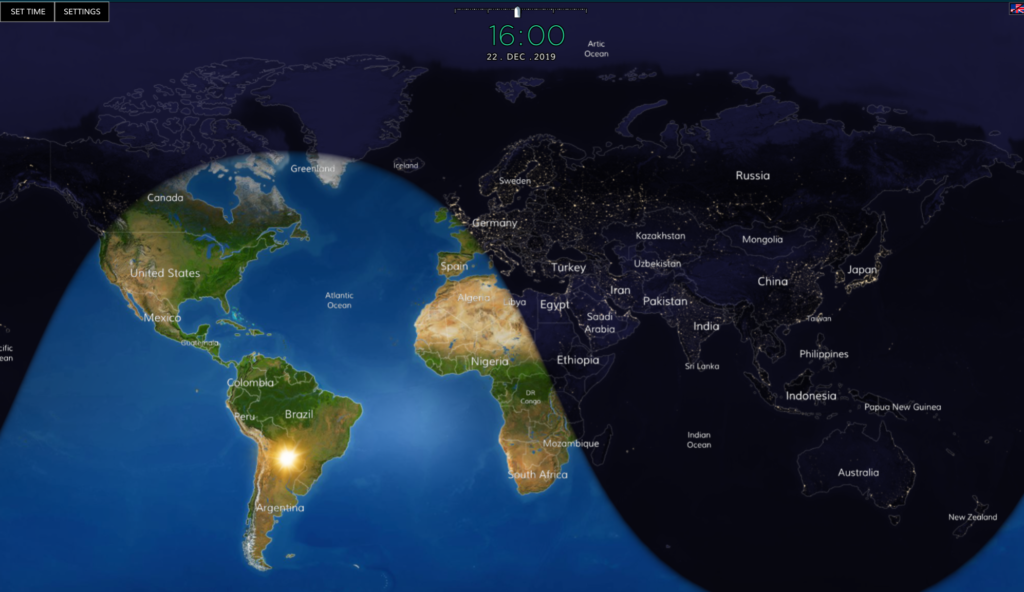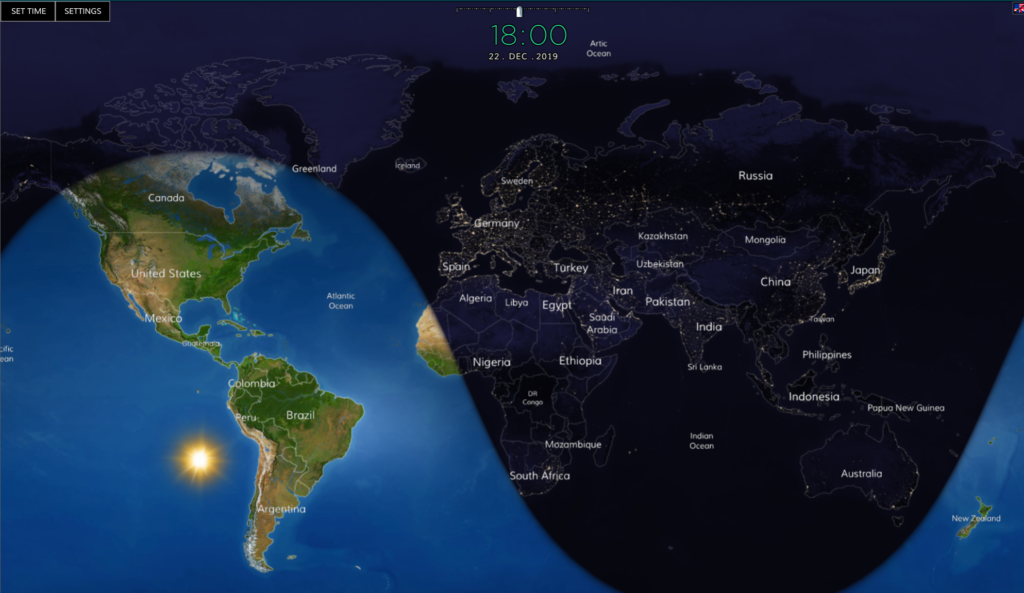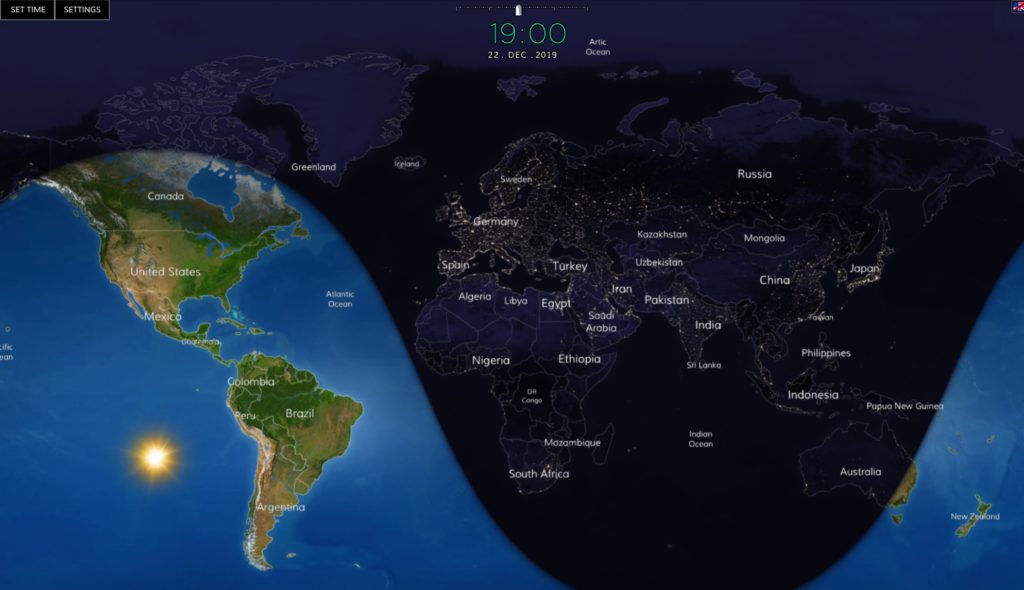Day Zones
Instead of having dozens of time zones, how about a global time with a few “day zones” ?
Just 6 day zones for Africa & Europe, Asia, Australasia, Pacific, Americas and Atlantic.
Proposal
It is proposed that 6 day zones are adopted to support use of a single global time zone.
Different cultures variously start their day at sunset, midnight, sunrise.
For systems that want a precise time, a new day would nominally start at UTC:
- 02:00 Atlantic
- 06:00 Americas
- 10:00 Pacific
- 14:00 Australasian
- 18:00 Asian
- 22:00 Africa & Europe
These simply nominate a start of day (not date) for a region when using UTC.
For backwards compatibility with time zones, it would be possible to have more,
as a step forward to simplification.
Background
There have been several proposals to use a single time zone around the world,
instead of the 37 different local time zones in use:
- Universal Time – eg. Hanke-Henry
- Decimal time – eg. Swatch Internet Time.
- 360 Degrees – eg. New Earth Time .
As Do we even need time zones ? says, UTC is already in international use, in addition to local time zones. It briefly mentions the issues about having a day/date change in the middle of your daytime (from :8:34 – :9:34).
How can we be clear about which day whilst having a unversal date time ?
Aims
Let’s aim to support use of a single time zone with natural names for days,
by declaring the start of a day by region.
Let’s make it simpler than time zones, and align to natural groups of countries,
such as by continent.
There are cultures that start the day at sunset, and others at sunrise.
Working assumption is that most cultures want to keep the daytime whole,
and may be willing to split the night time.
Method
- When is it dark in a region ?
Using daylight maps, when’s it dark over most of a region on its summer’s solstice ?- Americas 06:00
- North America 06:00 (05:00-07:00) ex. alaska.
- South America 02:00 .. 8:00
- Europe 22:00 .. 00:00 (01:00 ex. finland )
- Africa 19:00 .. 02:00
- Asia 18:00
- Middle East 18:00 .. 01:00
- India 15:00 .. 23:00
- China 15:00 .. 19:00
- Pacific
- Japan 11:00 .. 18:00
- Australia 12:00 .. 18:00
- New Zealand 09:00 .. 16:00
- Americas 06:00
- Darkness, by most to least constrained.
- North America is darkest at 06:00 due to northern latitudes.
This makes it a fixed point, from which to space other regions midnights. - Europe is darkest between 22:00 and 00:00
- Africa and South America together are dark at 02:00.
- South America is dark between 02:00 and 8:00
- Asia as a whole is darkest at 18:00. This time could include JP, AU, not NZ.
Subdividing the region enables more flexible start times.
- North America is darkest at 06:00 due to northern latitudes.
- What combinations of day starts are available
- 3 zone = 06:00 Americas, 22:00 Eurasia Africa, 14:00 Australasia
- 3 equal zones = 08:00 Americas, 00:00 Eurasia Africa, 16:00 Pacifica
- 4 equal zones = 06:00 Americas, 00:00 Europe Africa, 18:00 Asia, 12:00 Pacifica
- 6 equal zones = 0:00 EU Africa, 04:00 South American, 08:00 North American, 12:00 Pacifica, 16:00 Australasian, 20:00 Asian
- 6 equal zones = 22:00 EU Africa, 02:00 Atlantic, 06:00 Americas, 10:00 Pacifica, 14:00 Australasian, 18:00 Asian
- Considerations
- As 6:00 seems good for both Americas, the same zone is preferred.
- As 18:00 covers most of Asia, this is preferred.
In the east, day starts just before dawn. In west, day starts just after dusk. - Adjusting 6 equal zones by half a hour seems slightly better for coverage.
Daylight Maps
These Daylight Maps show how the periods of darkness were estimated.
The aim is to find a time when night is shortest during, to select a start of day for a region.
Northen Hemisphere Summer
Southern Hemisphere Summer
